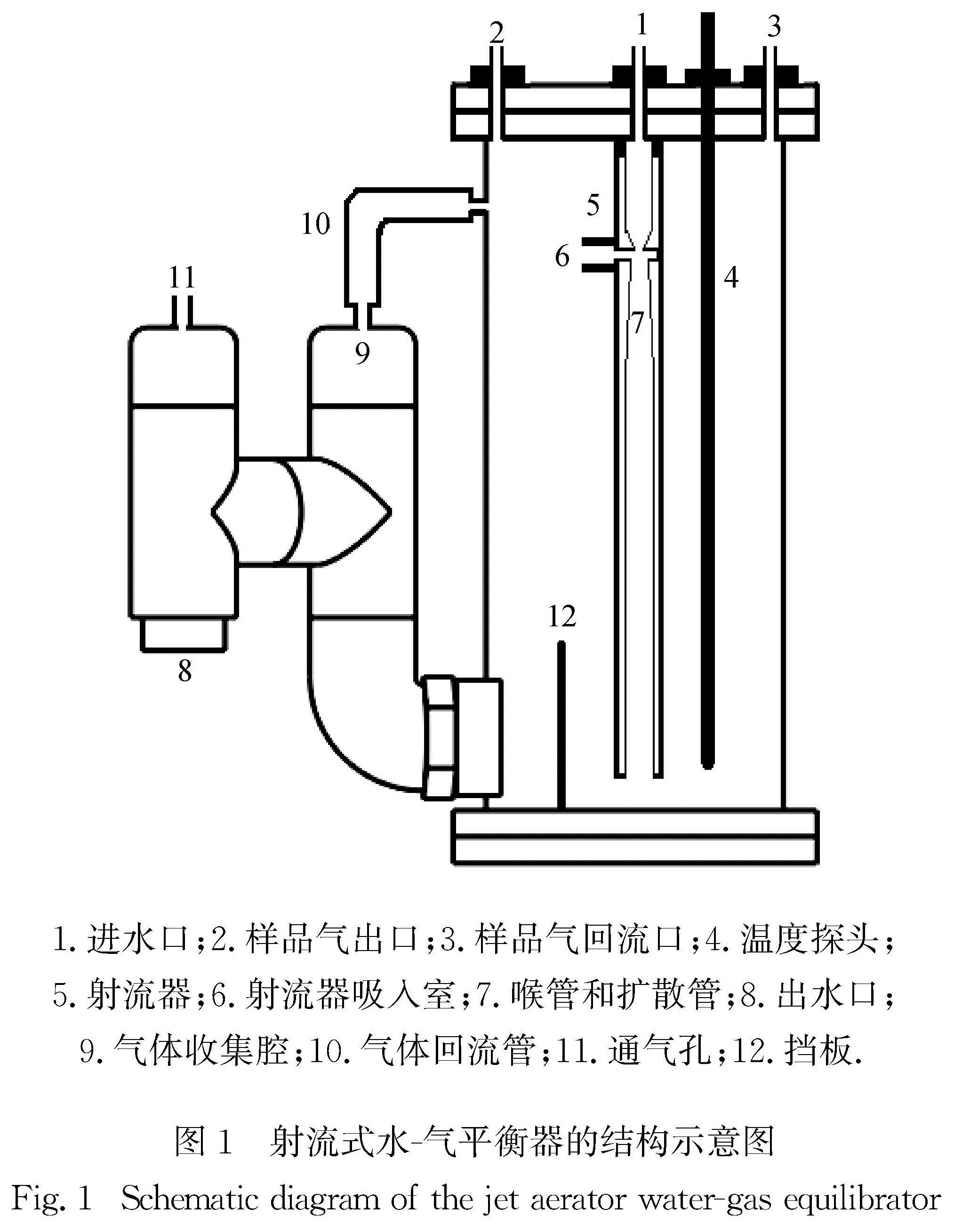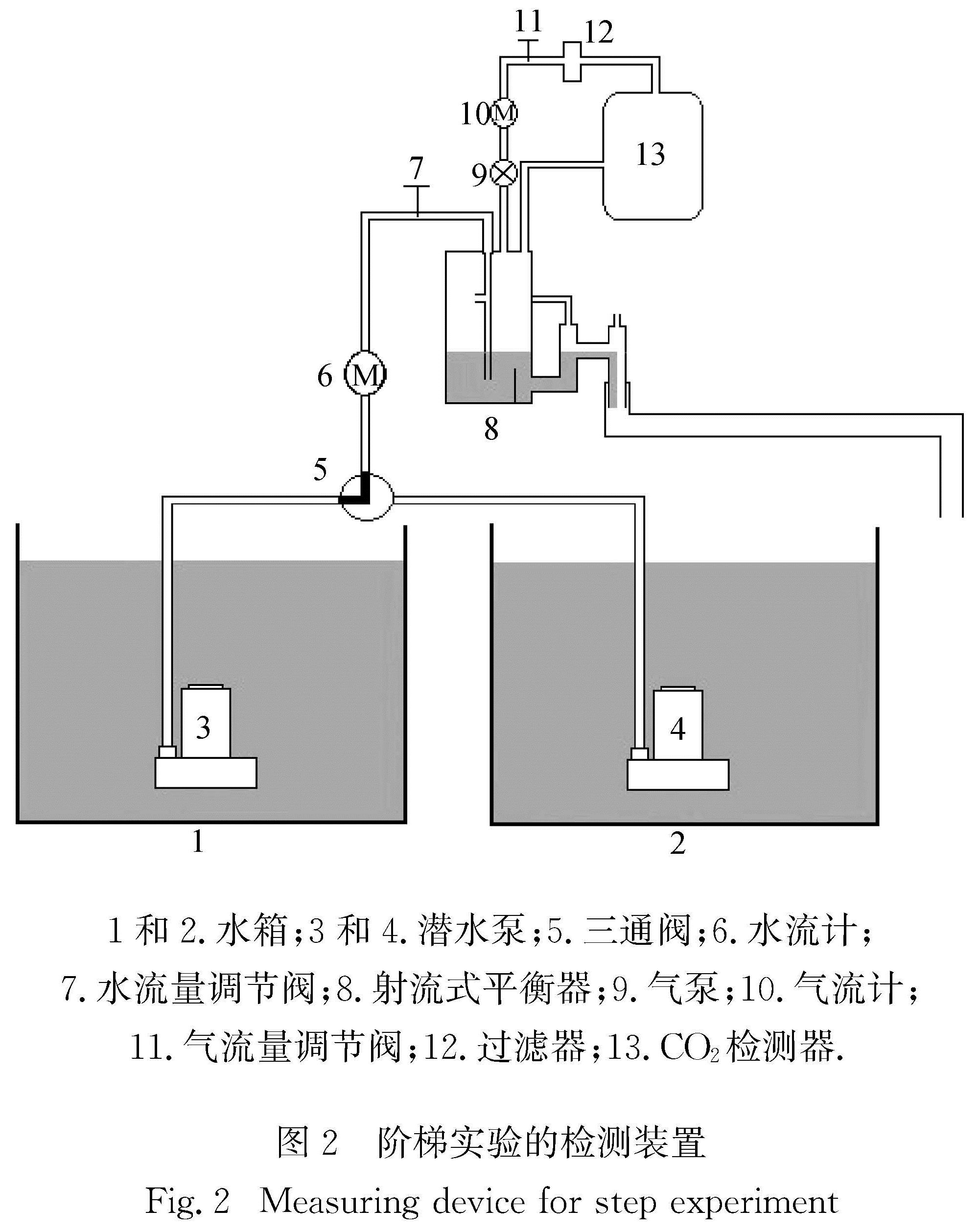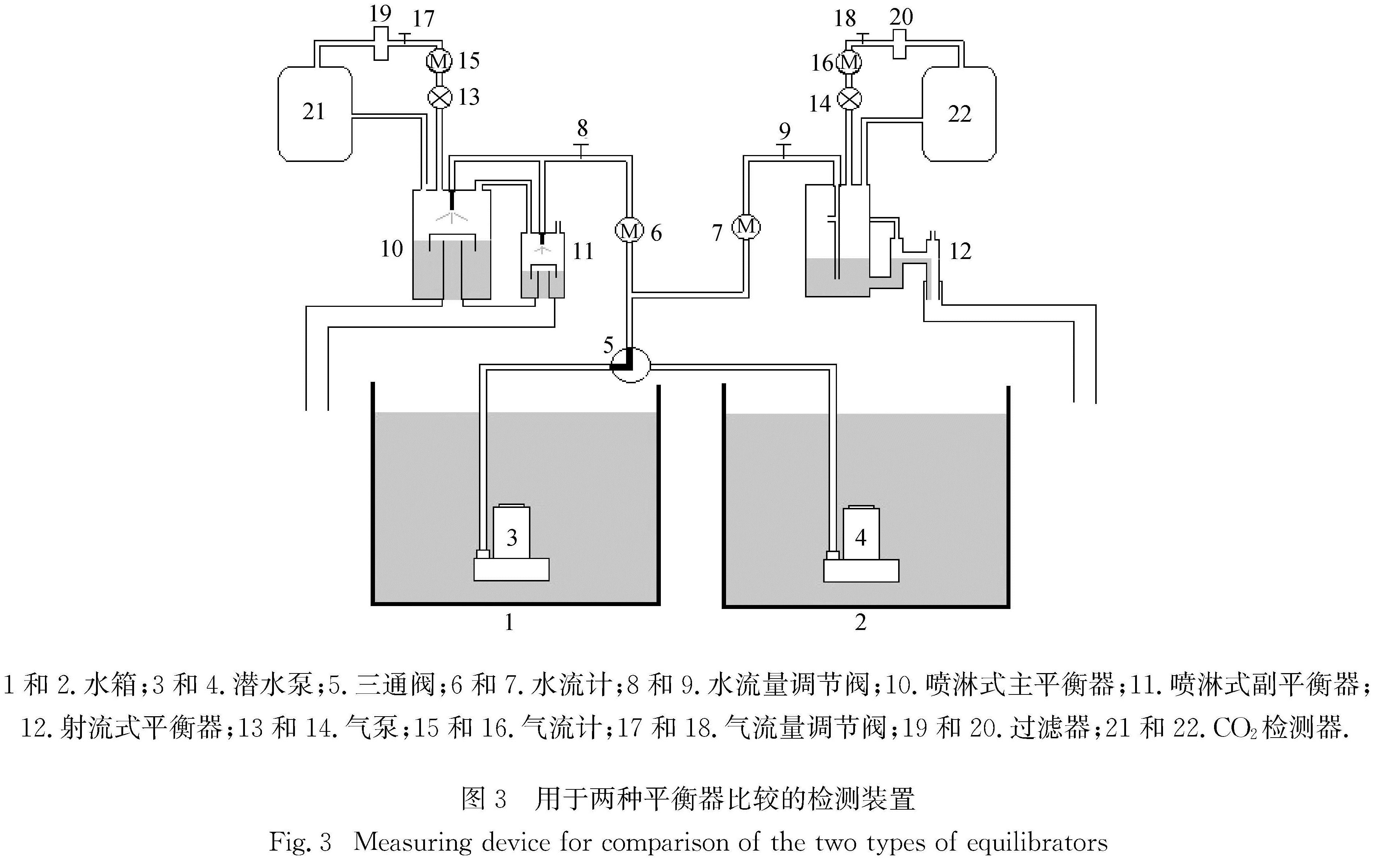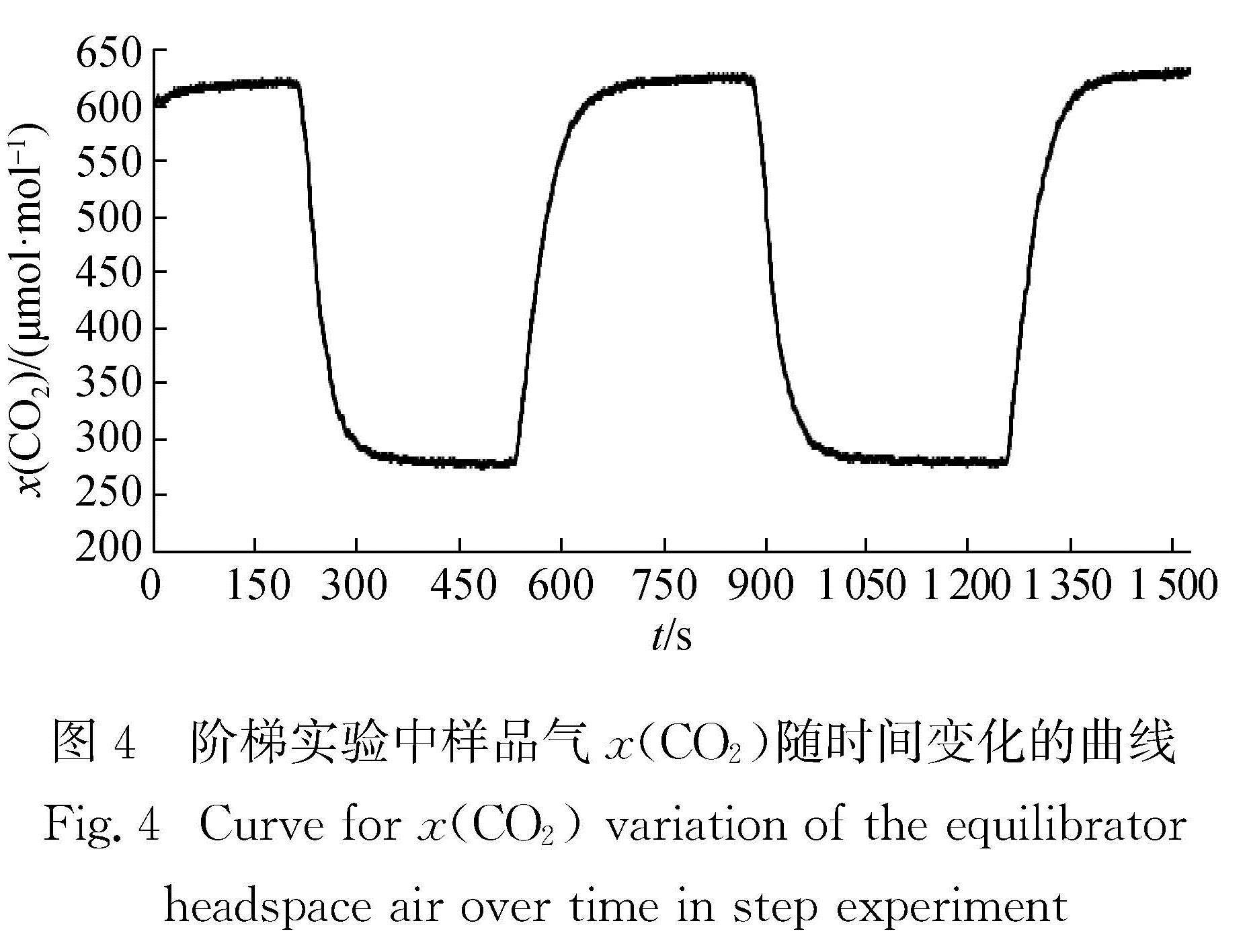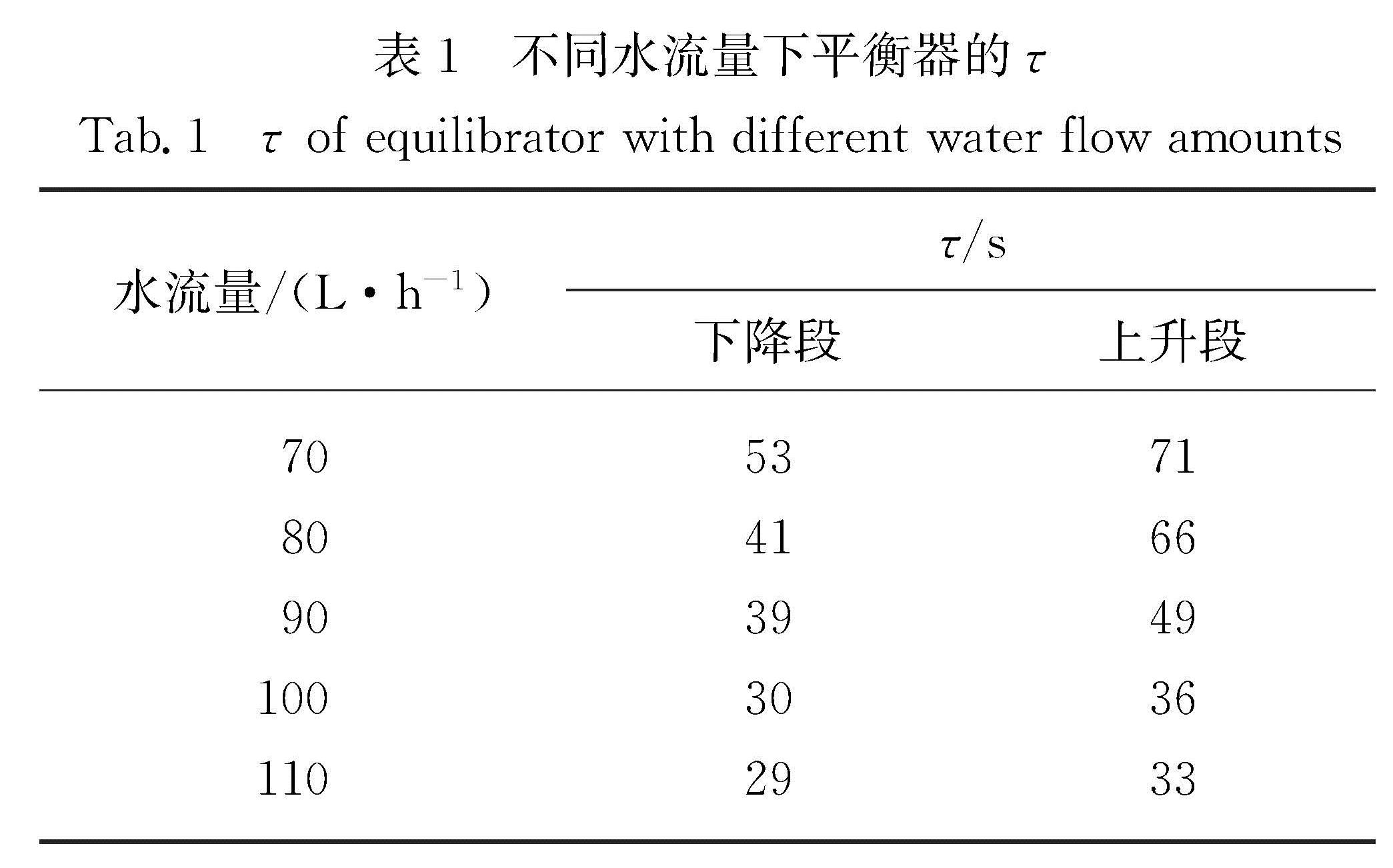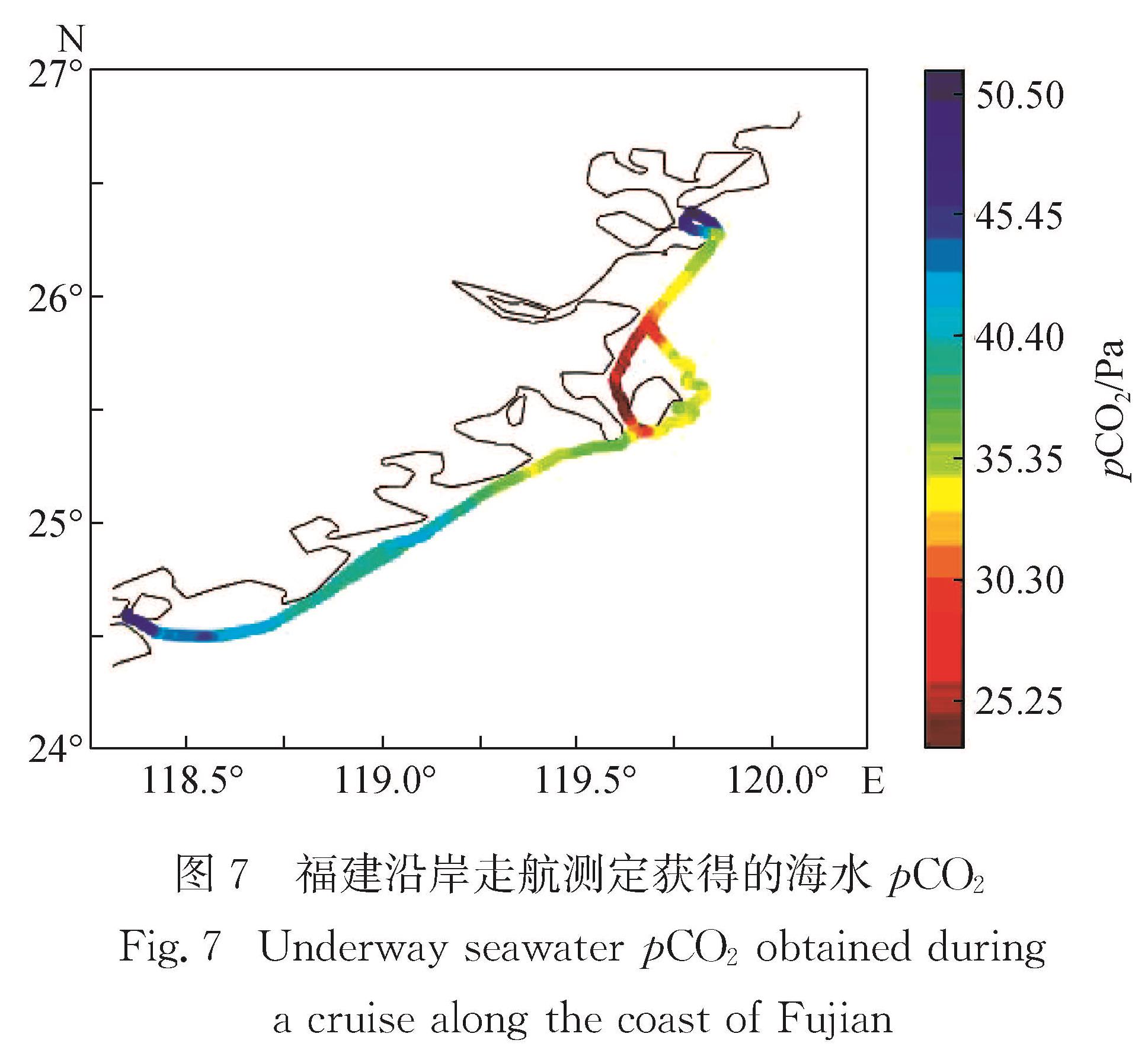Objective: Water-gas equilibrator is a crucial component in the measurement system of the partial pressure of CO2 (pCO2) in seawater, which determines the system performance such as accuracy and stability. A water-gas equilibrator using jet aerator was designed and tested in laboratory, and applied in the field. This study aims to provide the research community with a new water-gas equilibrator with reduced size and faster response.
Methods: The new water-gas equilibrator was based on a jet aerator, which enhances the CO2 exchanging rate between air in the headspace of the equilibrator and the seawater flowing into the equilibrator. A gas-collecting chamber was installed on the outlet of the equilibrator to collect gas coming out of the equilibrator. The collected gas went back to the equilibrator through a gas-returning tube, which connected the chamber and the equilibrator. As a result, the loss of gas in the equilibrator was reduced. The time constant (τ) of the equilibrator under different seawater flow rates, which was the measure of the response time of the equilibrator, was evaluated by step experiments and compared with that of a commercial shower-head equilibrator (General Oceanics, USA). The effect of volume ratio of water and gas in the equilibrator on τ was optimized. The influence of CO2 concentration in ambient air on that of the gas in the equilibrator was investigated. The performance of the equilibrator in field was tested in a cruise for the underway measurement of pCO2 in seawater along the coast of Fujian.
Results: When the flow rate of seawater entering into the equilibrator increased from 70 L/h to 110 L/h, the τ of the equilibrator decreased steadily, indicating faster response with higher flow rate. However, when flow rate was 110 L/h, there was a potential risk of pumping seawater into the detector due to the increase of water level in the equilibrator at high flow rate. As a result, a flow rate of 100 L/h was more suitable for the equilibrator. The volume ratio of water and gas in the equilibrator had significant effect on τ. When the ratio decreased, more seawater and less air were retained in the equilibrator, resulting in faster exchange of CO2 between water and gas. When the equilibrator was alternatively surrounded by the gas with high CO2 concentration (1680 ppm) and ambient air, the CO2 concentration of the gas in the equilibrator was not affected by the alternative change of CO2 concentration out of the equilibrator. The comparison between the equilibrator and the commercial shower-head equilibrator showed that the former had faster response. This was due to the use of jet aerator, which produced fine bubbles and accelerated the mass transfer rate of CO2. The equilibrator was successfully applied in the field for underway pCO2 measurement of seawater along Fujian coast from April 26th to 28th, 2020. The equilibrator ran stably during the two-day cruise, demonstrating that this new equilibrator was suitable for the application on board.
Conclusion: In this study, a new equilibrator based on jet aerator was developed, and its performance was tested both in laboratory and in field. The results showed that the τ of the equilibrator was related to the flow rate of seawater entering into the equilibrator and the volume ratio of water and gas in the equilibrator. Under optimized conditions, the equilibrator had faster response than the commercial shower-head equilibrator. In addition, the CO2 concentration of the gas in the equilibrator was not affected by the ambient air of high CO2 concentration. It was able to operate smoothly on board and could be used for the measurement of seawater pCO2. This study provides the scientific community with a water-gas equilibrator of high performance.
水-气平衡器是海水CO2分压(CO2 partial pressure,pCO2)测量系统的关键部件,决定着测量的准确度与稳定性.通过将射流器应用于一种新型水-气平衡器的研制,增强水气间CO2的交换; 同时在平衡器排水管上设计气体收集腔及气体回流管,避免平衡器内气体损失,提高运行的稳定性.在实验室测试了平衡器的性能,并将其应用于福建沿岸海水中pCO2的船载走航测定.结果表明,与商品化的喷淋式水-气平衡器相比,所研制的新型平衡器具有体积小、响应速度快的特点,能在实际环境中稳定运行,可以用于海水pCO2的测量,是一种新型高性能水-气平衡器.
